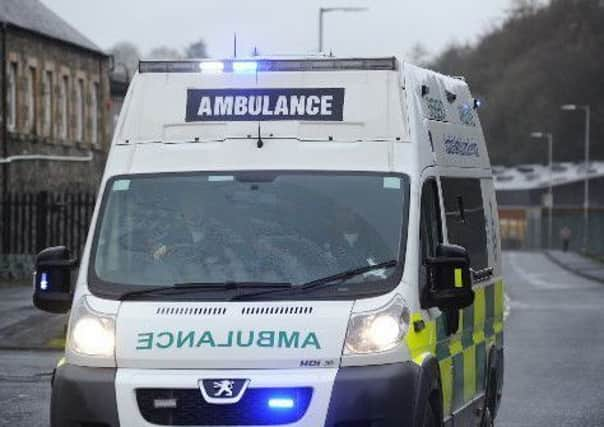Ambulance response times raise concerns


Scottish Ambulance Service performance statistics highlight the challenges facing areas without a local station.
In life-threatening situations in 2018 up to October 31, the average response time to a 999 call from Turriff was 18 minutes.
Advertisement
Hide AdAdvertisement
Hide AdOther problem areas were Aboyne (15 minutes) or the Mearns (15 minutes).
In the worst cases, crews took more than 30 minutes to reach patients in those areas.
In contrast, ambulances arrived in Peterhead within seven minutes, while the average for the whole of Grampian was six minutes and 50 seconds, within the national target of eight minutes.
The SAS changed its system of reporting ambulance response times from October 2017 onwards.
Separate figures obtained following a Freedom of Information (FOI) request by the Scottish Conservatives have also shown there have been dozens of hoax calls in the past year.
Peter Chapman, Scottish Conservative MSP for North East Region, said: “These figures highlight once again the poor level of cover experienced by parts of the North-east.
“Our first responders do a terrific job, but the response time can often depend on the proximity of the nearest ambulance station.
“In life-threatening situations, every second can count.”
A Scottish Ambulance Service spokesperson said: “We prioritise the sickest, most seriously ill patients and as a result of this approach, we have almost doubled survival rates for cardiac arrest patients since 2013.
Advertisement
Hide AdAdvertisement
Hide Ad“For less ill patients, our call handlers may spend a little more time with the patient to better understand their condition and ensure we get the right, not necessarily the nearest or quickest, response to the patient first time.
“In remote areas of Scotland, we have a range of resources we can deploy depending on the nature of the incident from rapid deployment of our network of Community First Responders, to air support, ambulance crews, paramedic response units or other emergency services if they are nearby.
“We are currently training an additional 1000 paramedics across Scotland who will further increase our capacity, whilst our £78 million investment programme is introducing 1000 new vehicles between 2016 and 2020.”